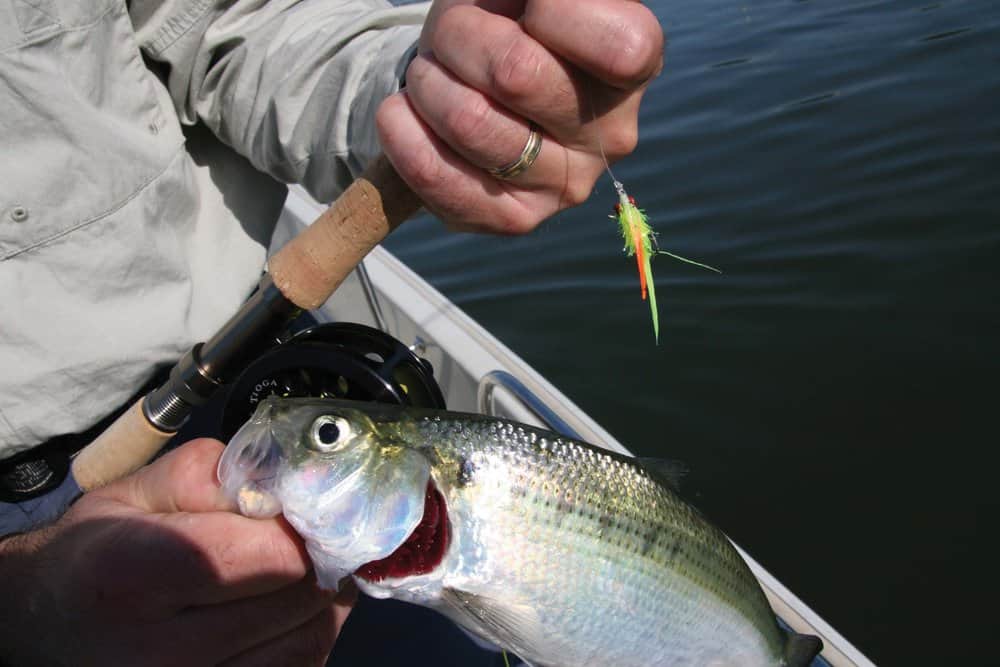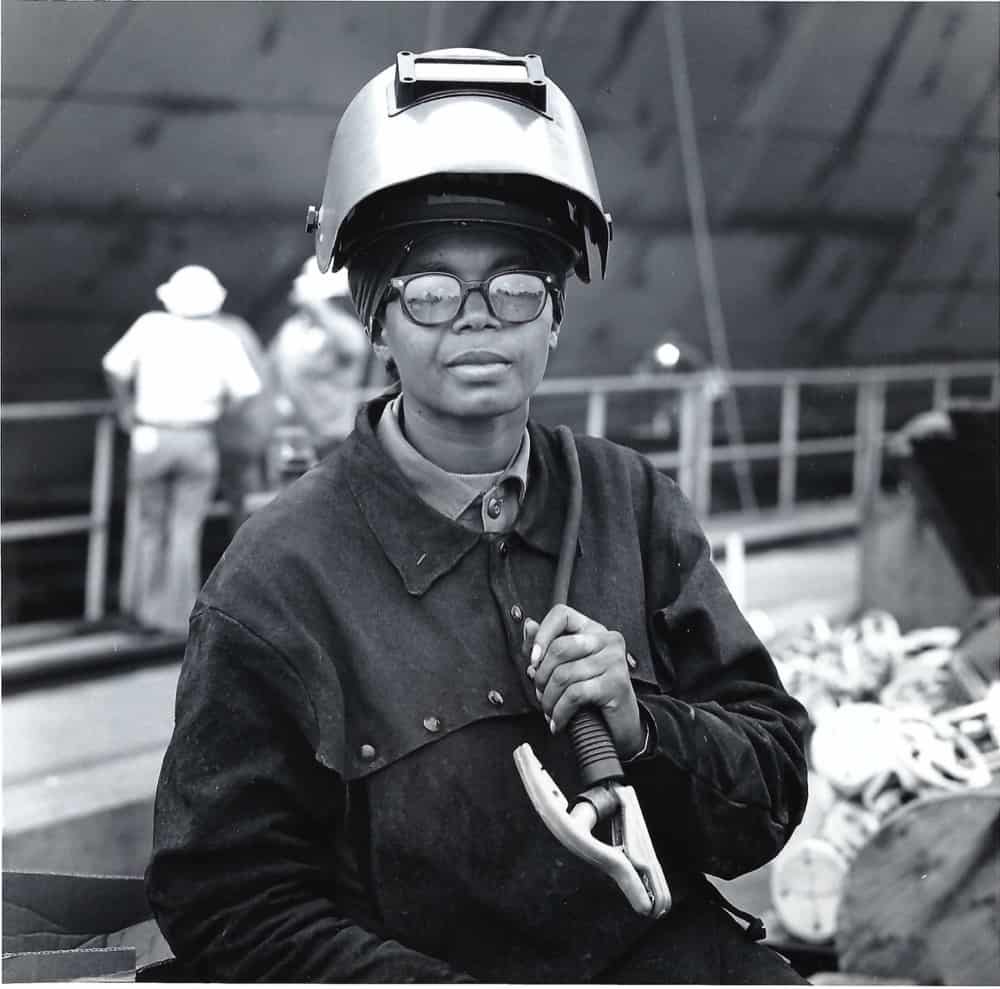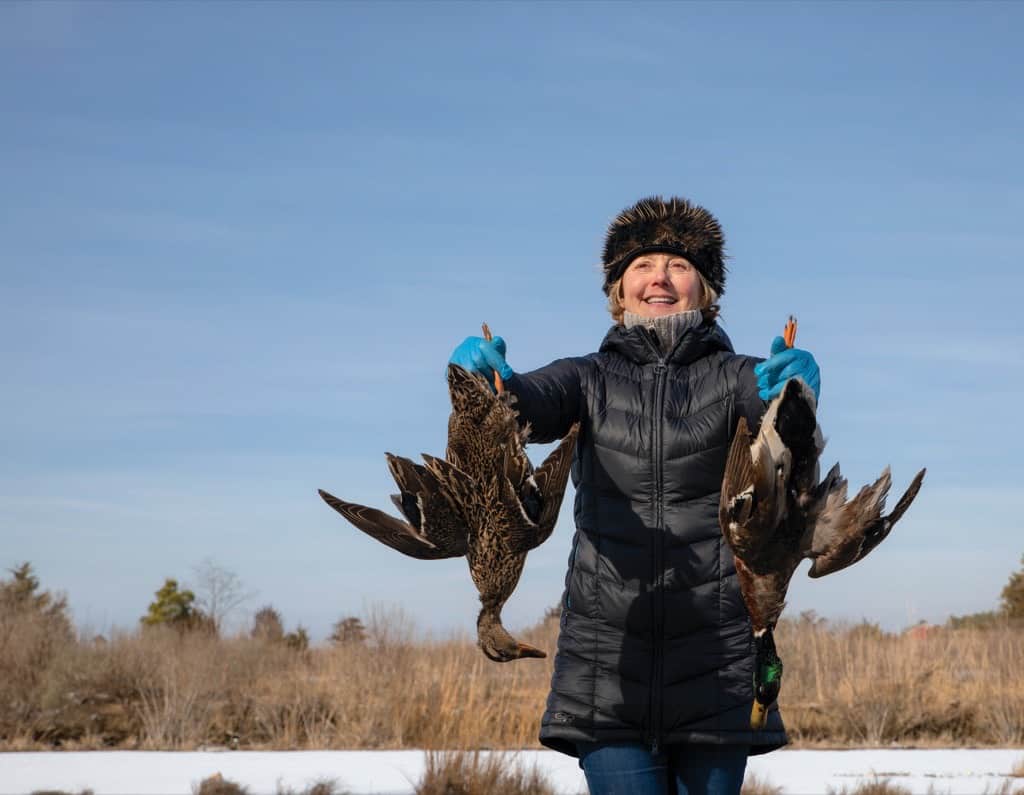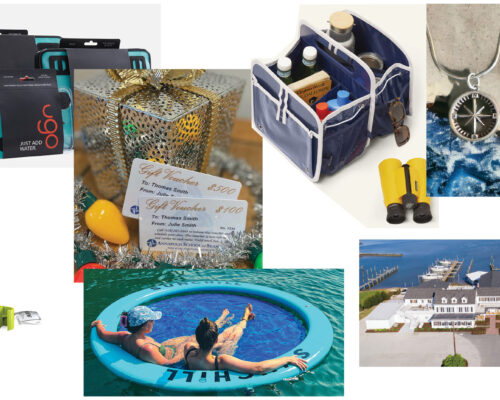With spring, we return to the streams of our youth.
by Chris D. Dollar
I was part of a panel discussion at a fishing show this winter when the moderator asked us to name our favorite spring fish. Predictably, yellow and white perch garnered top mention, followed by crappie and chain pickerel. No surprise in those choices, since all are exceptional and accessible springtime Chesapeake gamefish.
When it came for me to pipe up, I didn’t waffle or oscillate: I named both shads, American (white) and its smaller cousin, hickory. Pound-for-pound, American shad fight as hard as most Bay fish. Hickory shad, also called hickory jacks or tailor shad, are sheer delights, owing to their acrobatic leaps when hooked, hence their other nickname, “poor man’s tarpon.”
The pair’s feistiness is just a part of why I love them. Both are fueled by some mysterious primordial instinct that compels adults to return from the Atlantic Ocean to the tranquil waters in which they were spawned. Shad and other herrings were once so abundant that they were the dominant Chesapeake Bay commercial fishery. The harvest peaked at about 17 million pounds by the turn of the 20th Century. Riverside landings would be jammed with cars and people looking to buy fresh roe and shad. And it wasn’t too many years ago that river towns, such as Vienna on the Nanticoke, held festivals heralding the native fish’s return. One traditional way to cook them is on cedar or oak planks over an open fire. Roe and fried eggs are crazy good, too.
Sadly, decades of overfishing, spawning habitat degraded by pollution, and river passages blocked by dams, conspired to push these fish to the brink of collapse. A familiar Bay story, isn’t it? Like many things Chesapeake, we humans have a penchant for loving such treasures to the edge of extinction.
Photo by Chris D. DollarToday, Chesapeake shad fishing is exclusively of the sporting kind, save certain Native Americans in Virginia who are allowed to harvest them. In a typical spring, hickories show up in the Bay’s rivers before the whites, with the peak run occurring from early April through mid-May. It’s a relatively short run, obscured somewhat amidst the hype of the trophy rockfish season.
Like panfish, you can catch shad from the shore, small boat or canoe. Traditional shad hot-spots include the upper reaches of the James, Potomac, and the downstream creeks of the Susquehanna, Deer Creek, and Octoraro Creek. Other shad runs include the Rappahannock, Nanticoke, Nottoway, and even the Gunpowder and Choptank rivers.
Few things beat rowing out at first light from the renowned Fletcher’s Boathouse on the upper tidal Potomac where, for more than 150 years, people have enjoyed recreating on our nation’s river. During spring, the area is resplendent with wildlife—mallards, wood ducks, geese, and cormorants commingle. Even Bonaparte’s gulls, headed to their Canadian breeding grounds, stop by for a visit as catfish, herring, rockfish and shads roil about in shameless expressions of fish love.
Another reason I like this fishery is it is restricted to artificial lures or flies. No bait. Why shad even smack a lure or fly is beyond me, particularly because they’re almost exclusively plankton feeders. Once they’ve returned to freshwater, however, shad have been known to eat small aquatic insects. Still, experts think they mostly strike out of aggression, or annoyance, rather than hunger.
In my experience, lure color seems to be more important than size, but not always. The time-tested shad dart (one sixteenth to one quarter ounces) in flaming red, hot pink, orange or chartreuse are “shad killers.” I mean that metaphorically, of course, because again, shad are strictly a catch-and-release gamefish. Mini-tube jigs or round jigs (my preference, dressed) tipped with rubber grubs, straight or curly tailed, in champagne and hot pink also work well. Small fluttering spoons can be productive at times. Basic shad flies can be tied on #4 hook with chenille body, marabou tail with crystal flash and tinsel.
A standard rig consists of a three-way swivel (#2 or smaller), with the heavier dart tied on the shorter (15-inch or so) shot of leader. The lighter lure runs behind on a 20- to-24-inch leader. Go barbless for easier release, preferably while the fish is in the water. If you must bring it out of the water, do so with a shallow rubber-coated trout net.
Six to seven-foot spin outfits in the eight to 10-pound class, with 2000-3000 model reels are fine. I prefer six-pound test braid, and a 12-pound fluorocarbon leader. If fly fishing is your game, a five or six-weight rod with a sink-tip line works. A tapered mono leader of less than eight feet works fine for me.
Cast upriver and slowly retrieve your lure as it is carried by the current. Give it an upward snap to help you cover the water column. Pay close attention so as not to let slack creep into your line. Once you’ve dialed into the right combo of lure weight and color, retrieval speed, and depth, lock it in and stick with it until the bite slows. Then change tactics to find out what they want next. Shad are light sensitive, so your best bet is to fish in the low light of early morning or evening, or on overcast days. These are the times that have produced my best days.
As much as I enjoy playing a robust shad to hand—it is unequivocally one of the pure joys afforded the well-rounded Chesapeake angler—I happily admit that it pales in comparison to the evenings I spent during the late 1990s on the “Broad Potomac’s shore…in the full flush of Spring returning,” (with apologies to Walt Whitman—Leaves of Grass). That was when I tagged along with waterman Louis Harley and Jim Cummins, then of the Interstate Commission on the Potomac River Basin. For years, the pair was the point of the spear trying to restore shad. They’d catch shad and strip the eggs and milt into a container, which would then be trucked to a hatchery. Once the fish were raised to fingerling size, schoolkids would release them back into the Potomac.
Harley was a river legend who, until his death in 2009, made his living working the waters around Virginia’s Mason Neck. The first night I went out with them, the May sky was as dark as ink with a northwest breeze kicking up. When Cummins joined us, we shoved off in Harley’s skiff loaded to the gunwales with drift nets, plastic tubs, and other gear. I looked around for a GPS or depth finder. There wasn’t one, just a small compass.
In the shadow of historic Mount Vernon, that grand river estate where George Washington once organized netting operations to harvest prodigious numbers of spring-run herrings and shads, we hauled in silvery, roe-laden shad, almost mythical in silhouette. It’s mind boggling that they were the distant relatives of the shad Washington’s crews landed. Among the shad was the largest cow rockfish I’ve ever seen—easily 70 pounds. The men quickly released it without drama, its massive tail propelling it deep into the river with one swipe.
As impressive as that biological haul was, it was equaled by Louis’ skill in finding his way back time and again to the nets, as if by instinct. Uncanny. Not unlike the wondrously epic journey shad make every spring to the rivers of their birth.
Captain Chris D. Dollar is a lifelong Chesapeake outdoorsman and a dependable source of information and inspiration.




